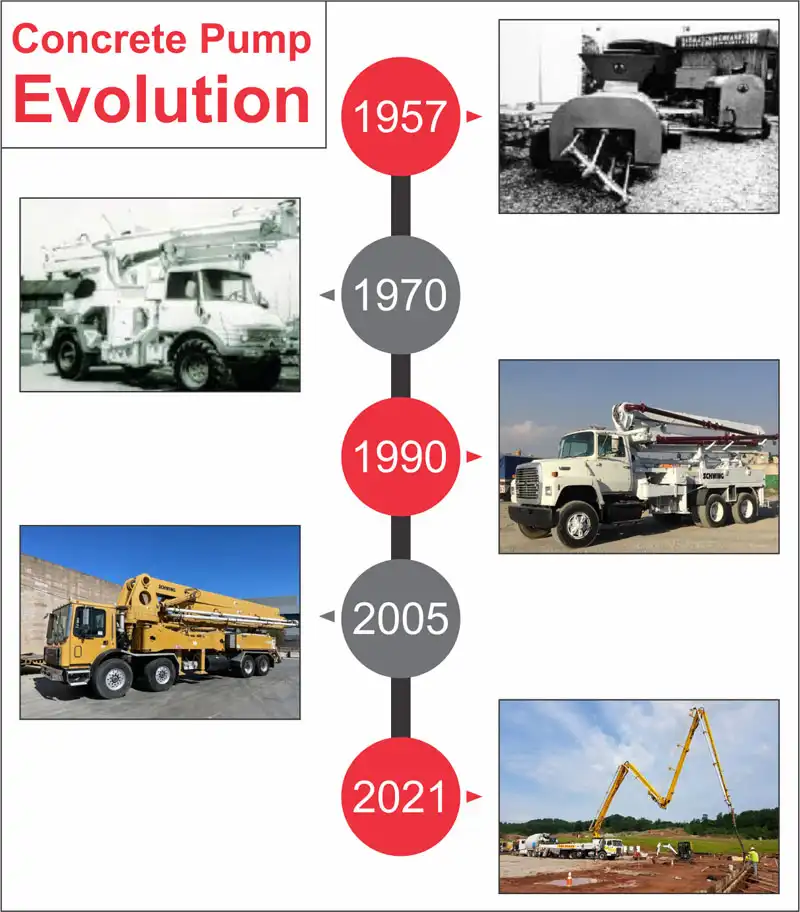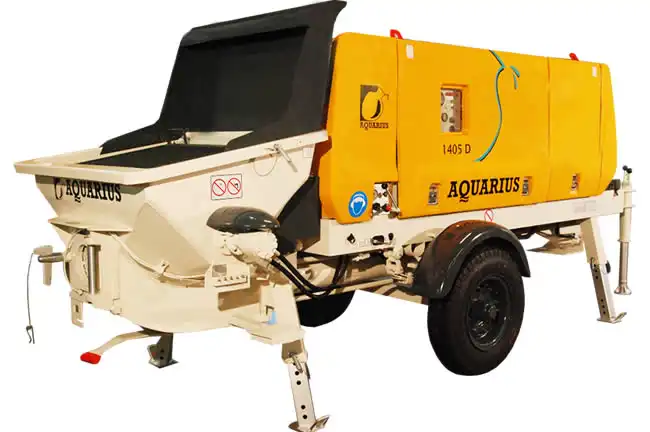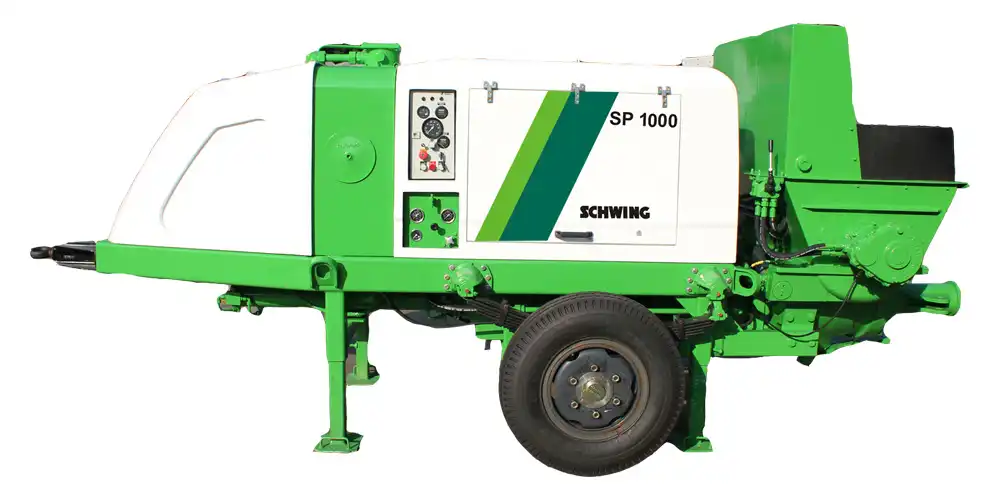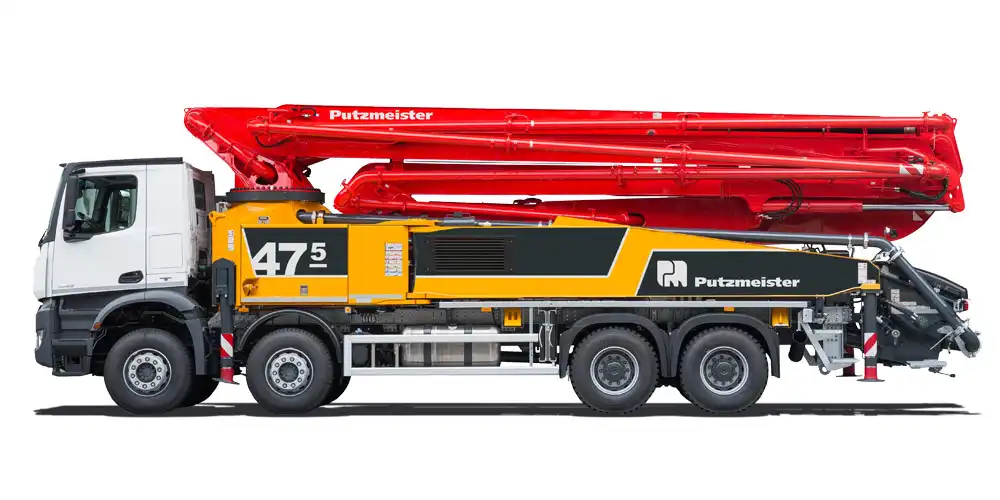Concrete pumps have gone through an evolution. In the early 20th century, pumps were used to move liquid concrete from a cement mixer involving wheelbarrows. As buildings started getting taller, the process to move the concrete entailed lifting it in large buckets known as skips grew. Until the early 20th century, concrete was mixed on the job site and was used to move liquid concrete from a cement mixer using wheelbarrows or in buckets lifted by cranes. This required a lot of time and labor. In 1927, the German engineers’ Max Giese and Fritz Hull came upon the idea of pumping concrete through pipes. There were several different designs of concrete pumps over the ensuing years, the biggest advancement occurred in 1957. This was the invention of a twin-cylinder hydraulic concrete pump from Friedrich Wilhelm Schwing’s company, Schwing GmbH. Since then the ability to pump concrete at a much faster rate than buckets could lift it and bring up a constant supply of concrete to reach the rising heights of modern construction projects. The placing hoses allow the liquid concrete to be positioned exactly where it is needed and eliminate the need to distribute or move it around. A modern concrete pump can perform faster than buckets could lift it, it also means a constant supply of concrete to the top and the placing hoses can be positioned.

Application of modern concrete pumps
Concrete pumps are important in the construction of high-rise buildings and structures. The placement of concrete in inaccessible areas has necessitated the use of pumps in the current construction process. Modern concrete pumps can pump faster, lift buckets with ease and they allow for a continuous flow of concrete. They also enable the concrete to be poured directly via a placing boom rather than being transferred sloppily in a bucket. Especially with the growth of ready-mixed concrete across the world, the need for pumping has increased manifold. While the ease of pumping depends on the type of pump available, the distance over which the concrete is to be pumped and the properties of the concrete, along with several finer aspects, can affect the operation. Concrete boom pumps are finding great utility in infrastructure projects such as hydro, airports, metros, flyovers, bridges, as these projects require large quantities of concrete in quick time-frames. Be it large-scale commercial projects or medium-sized construction sites, the concrete pumping machines are used for both.

Concrete pumps models used in India
Placement of concrete in inaccessible areas on a construction site has necessitated the use of pumps in today’s construction activities. Especially, with the growth of ready mixed concrete across the country, the need for pumping has increased manifold. Here are a few trends of the concrete pump market. Concrete pumps are divided into three types: Boom or truck-mounted concrete pump, Trailer line/stationary concrete pump and Specialized usage concrete pump. Based on three broad categorizations, various types of concrete pumps are being utilized across the country based on transport and position of the pump, boom placement and store and supply capacity of the concrete.
Stationary Concrete Pump
The latest stationary concrete pump comes with a specified Cylinder diameter of 150 to 200 mm ensuring long distance and higher aggregate size pumping. The high diameter cylinder ensures the specified maximum output in the lowest possible strokes per minute, thereby reducing the wear & tear of the pumping system substantially. The output can be controlled infinitely from zero to maximum, as may be required for the site application. Additionally, the seal type delivery piston design reduces the replacement cost drastically. Both Diesel and Electric line pumps have a lesser towing length in their class and are ideal for pumping concrete up to a height of 60-80 meters. The pumps optimize the use of engine power for achieving high rise and long-distance pumping. This ensures reduced fuel consumption along with extended pump life. The high pressure is achieved by providing a higher rated prime mover and not by reducing the cylinder dia. Designed to achieve higher vertical height pumping, the pumps can also use relatively low slump concrete having higher size aggregates.

Trailer Concrete Pump
These pumps can produce pumpable grain sizes of up to 14 -16 mm over considerable distances. The powerful piston pump is ideal for shotcrete and liquid screed applications. With a delivery pressure of up to 68 bar and an output of 18 m3 / h, it is a real power pump, despite its small dimensions and low weight. It is small, light and features a powerful dual-piston pump. It is used for manual, not synchronized additive adding shotcrete and fine concrete up to a grain size of 16 mm. With a delivery pressure of up to 68 bar and an output of 18 m³/h, it is a real power pump, despite its small dimensions and low weight.

Truck Mounted Boom Concrete Pumps
Mobile truck-mounted concrete pumps come in all output ranges and boom sizes. They come with around 30 – 36-meter booms with X outriggers that offer more spaces for accessories storage. There are optional features like pump kits, Concrete stop valves and Automatic lighting systems. With the deck-mounted side pipe rack and large fold-up side panels now standard, these pumps allow for plenty of space and provide a quick, convenient and clean way to store everything that’s required for your operation. Ideal for high-pressure applications, S-Valve in these pumps is capable of pumping harsh concrete mixes. Its 8″ to 6″ (200 to 150mm) gradual reduction provides a smoother concrete flow, while the valve’s “thick-walled” construction increases its life span and reduces operating costs. These are used for large projects especially where you need to place concrete in hard-to-reach locations.

Truck Mounted Boom Static Pumps
Modern truck-mounted static pumps are built-in with the maximum flexibility for alternating requirements. It is equipped with a carrying capacity of the 100-meter delivery pipeline, an integrated water tank for high-pressure cleaning and a provision for air compressor and pressurized air tank for cleaning of the pipelines Latest series line pump is equipped with the highly wear-resistant ‘S’ transfer tube and can pump the most difficult concrete. They come with a long hose attached to a stationary pump mounted on a trailer. This hose allows you to more easily direct the concrete pour and is great for horizontal pumping, as you can extend the hose virtually as long as you need it. These pumps are also much smaller and more compact than their boom pump counterparts, making them much easier to transport and maneuver around a job site. They are also equipped with a water tank and a flushing water pump. Because of its flexibility and lower-volume capacity, you will more commonly use a concrete line pump for pouring concrete on smaller residential jobs, like building a swimming pool or repaving a driveway.

.Conclusion
The new updated models come with a high-pressure pump that caters to concrete pumping to 100m building heights. The models are equipped with the latest S-valve technology and with highly wear-resistant steel components. The new product range covers numerous applications starting with the small, versatile concrete pump and ending with the concrete pump that has the highest reach and best maneuverability.
Source: Schwing Stetter India, Putzmeister India, Ajax Engg, Aquarius engineering


